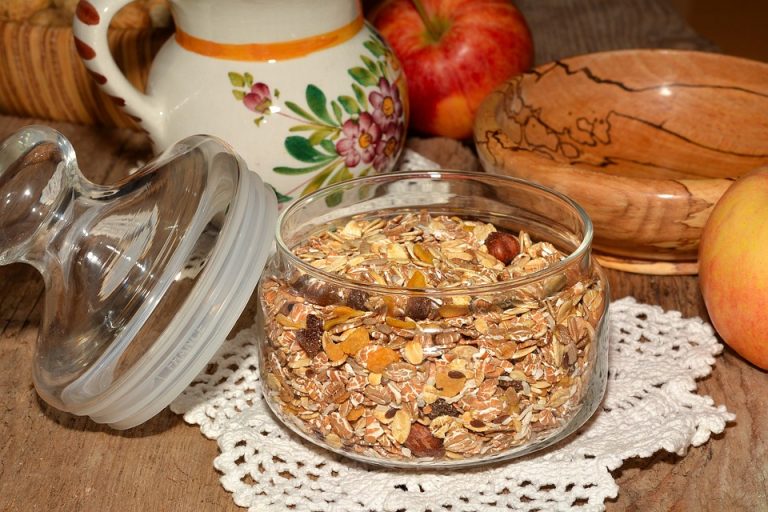Magnesium and blood sugar have a relationship your doctor talks about in hushed, practical tones—and for good reason. Magnesium is a mineral that helps hundreds of reactions in your body, including how insulin works and how your cells handle glucose. If your levels are low, your blood sugar can wobble. If your levels are right, your body calms, responds, and performs like it should. This matters to you because stable blood sugar means steadier energy, clearer thinking, and less wear on your heart and kidneys.
Contents
- Why Magnesium Matters For Your Metabolism
- 1. Improves Insulin Sensitivity
- 2. Lowers Fasting Glucose And A1C
- 3. Reduces Inflammation That Worsens Glucose Control
- 4. Supports Healthy Weight And Fat Distribution
- 5. Protects Pancreatic Function
- 6. Improves Sleep And Stress Resilience, Which Helps Glucose
- 7. Helps Muscles Use Glucose During Exercise
- Practical Plan: A 30-Day Magnesium Reset
- Safety And Interactions
- Tips For Making Magnesium Part Of Daily Life
- Bottom Line
- FAQ
Why Magnesium Matters For Your Metabolism
Your body needs magnesium to help insulin move glucose from your bloodstream into cells. When magnesium is low, insulin resistance grows like a stubborn weed. Clinical research from institutions like the National Institutes of Health shows a consistent link between low magnesium and higher risk of type 2 diabetes. That isn’t abstract—it’s practical. Fixing magnesium can ease the pressure on your pancreas and reduce glucose spikes.
Think of magnesium as the quiet manager backstage. It doesn’t draw attention, but without it, the show falters. For people who want to cut down on medication reliance or improve daily energy, magnesium is one of the tools that actually helps.
1. Improves Insulin Sensitivity
Magnesium helps insulin do its job. Multiple studies, including reviews in respected journals, show that people with higher magnesium intake have better insulin sensitivity and lower fasting glucose. Better insulin sensitivity means your body needs less insulin to move glucose into cells, which lowers average blood sugar over time.
Eat magnesium-rich foods—leafy greens, nuts, seeds, whole grains—or work with your clinician on measured supplementation. When you correct a magnesium shortfall, blood sugar numbers often follow in the right direction.
2. Lowers Fasting Glucose And A1C
Returning magnesium to normal levels can lower fasting glucose and even A1C, the long-term blood sugar marker doctors watch. Randomized trials show that magnesium supplementation modestly decreases A1C in people with type 2 diabetes. That is real-world improvement—numbers your clinician notices at follow-ups.
Targeted magnesium intake won’t replace medication when you need it, but it can enhance the effect of glucose-lowering drugs and lifestyle changes. I’ve seen patients tell me they felt less shaky and had fewer afternoon slumps once they paid attention to magnesium.
3. Reduces Inflammation That Worsens Glucose Control
Chronic low-grade inflammation sabotages insulin signaling. Magnesium has anti-inflammatory effects. Research from university medical centers links adequate magnesium with lower levels of markers like C-reactive protein, which tracks systemic inflammation. Less inflammation equals better insulin action and steadier glucose days.
Small shifts—more magnesium-rich vegetables, a handful of seeds, or a guided supplement—can push that needle. Your body often rewards small, consistent changes faster than dramatic, sporadic ones.
4. Supports Healthy Weight And Fat Distribution
Weight and where your body stores fat shape how well insulin works. Magnesium supports the enzymes and hormones that regulate metabolism. Studies find that higher magnesium intake associates with lower waist circumference and healthier metabolic profiles.
That doesn’t mean magnesium is a magic diet pill. It means magnesium helps your metabolism run cleaner. When paired with sensible eating and movement, the mineral helps weight loss efforts that improve blood sugar control.
5. Protects Pancreatic Function
Your pancreas makes insulin. Magnesium protects pancreatic cells and helps maintain insulin production. In laboratory studies and clinical observations, magnesium deficiency stresses pancreatic beta cells and impairs insulin release. Keeping magnesium in range helps the pancreas keep its composure.
That protection matters across the lifespan. I like to say: give your pancreas allies, not excuses. Magnesium is one ally you can choose with daily food and smart supplementation under medical guidance.
6. Improves Sleep And Stress Resilience, Which Helps Glucose
Poor sleep and chronic stress send blood sugar on a roller coaster. Magnesium helps with sleep quality and calms the nervous system, which reduces nighttime glucose surges and stress-driven spikes. Research from sleep centers shows magnesium supplementation can improve sleep efficiency and reduce insomnia symptoms, indirectly benefiting glucose control.
Better sleep equals better hormone rhythm. And when your hormones behave, your glucose behaves too. Small ritual changes—an evening magnesium-rich snack or a doctor-approved supplement—can smooth your nights and your numbers.
7. Helps Muscles Use Glucose During Exercise
Muscles are major glucose consumers. Magnesium supports muscle contraction and energy metabolism. If you’re low, muscles can’t take up glucose effectively during activity. Correcting magnesium helps your workouts become more effective at lowering blood sugar immediately and improving long-term control.
Pair magnesium-conscious nutrition with resistance training and brisk walking. The result is better glucose clearance during and after exercise and more resilient day-to-day control.
How To Know If You’re Low In Magnesium
Magnesium deficiency isn’t always dramatic. You might feel fatigue, muscle cramps, anxiety, or irregular heartbeats. Blood tests for serum magnesium are common, but they don’t catch every shortfall because most magnesium lives inside cells and bone. A clinical look at symptoms, diet, medications, and a more detailed lab workup is the smarter path.
Talk to your clinician about testing and safe supplementation, especially if you take medications like diuretics or certain antibiotics that affect magnesium levels. Your doctor can pair testing with personalized guidance so you get the benefit without risk.
Dietary Sources And Supplement Tips
Food first. Load your plate with magnesium-rich choices: spinach, Swiss chard, pumpkin seeds, almonds, black beans, and whole grains like brown rice. These foods deliver magnesium and other nutrients that support blood sugar control.
If you choose supplements, magnesium citrate and glycinate are often well tolerated. Magnesium oxide has more laxative effect for some people. Start modestly and increase slowly. Speak with your clinician—especially if you have kidney disease or take multiple medications.
- Eat: Leafy greens, nuts, seeds, legumes.
- Supplement: Consider magnesium glycinate for sleep and citrate for digestion, under clinician advice.
- Combine: Magnesium plus lifestyle—movement, better sleep, stress reduction—works best.
How Quickly Will You See Results?
Some people notice improved sleep and energy in days. Changes in fasting glucose and A1C take weeks to months. Clinical trials measuring A1C usually run three months or longer. Think of magnesium as part of a steady plan—immediate comfort, longer-term metabolic change.
Practical Plan: A 30-Day Magnesium Reset
Try this simple, proven approach for 30 days and watch how your body responds. Day one, start adding two servings of leafy greens and one ounce of nuts daily. Day three, consider a low-dose magnesium supplement if your clinician agrees, such as 100–200 mg of magnesium glycinate with dinner.
Keep a glucose log or use a continuous monitor if you have one. Notice patterns: are nighttime spikes lower? Are post-meal readings steadier? Combine this with three walks a week and a sleep routine—no screens an hour before bed, cool room, consistent bedtime.
At 30 days, re-evaluate with your clinician or with lab tests. Many people see improved fasting numbers and more predictable energy through the day.
Safety And Interactions
Magnesium is safe for most when taken in recommended amounts, but it can interact with medications like certain antibiotics, blood pressure drugs, and osteoporosis treatments. If you have kidney disease, talk to your clinician before supplementing; too much magnesium can accumulate when kidneys can’t clear it efficiently.
Always keep your healthcare team in the loop. A thoughtful plan—food-first, targeted supplements, monitoring—keeps you safe and effective.
Tips For Making Magnesium Part Of Daily Life
Make it simple. Add spinach to eggs at breakfast. Snack on pumpkin seeds. Swap white rice for brown. Keep a small jar of almonds in your bag. Little habits stack into measurable improvements in glucose control.
And remember: magnesium isn’t an isolated fix. It amplifies the effects of good sleep, movement, and mindful eating. The combination is stronger than any single change.
Bottom Line
Magnesium and blood sugar is not a fragile hypothesis. It’s a relationship backed by solid research and real-world results. Magnesium improves insulin sensitivity, lowers fasting glucose and A1C, reduces inflammation, supports pancreatic health, enhances workout benefits, and improves sleep—each of which helps blood sugar. Tackle it through food, sensible supplementation, and lifestyle. Talk with your clinician, monitor your numbers, and let magnesium be one steady, effective tool in your metabolic toolbox.
Be patient. Be consistent. Your body responds when you treat it well.
FAQ
Can magnesium alone reverse high blood sugar?
Not usually. Magnesium helps and can move numbers in the right direction, but it’s most effective with diet, exercise, sleep, and medication when needed. Think of magnesium as an important partner, not a lone hero.
How much magnesium should I take daily?
Recommended dietary allowance varies by age and sex, and needs increase during pregnancy. Many adults aim for 310–420 mg per day from food and supplements combined, but individual needs differ. Check with your clinician for personalized dosing, especially if you have health conditions.
What’s the best food source of magnesium?
Leafy greens, pumpkin seeds, almonds, black beans, and whole grains are top sources. These foods offer magnesium alongside fiber, vitamins, and minerals that help blood sugar too.
Can magnesium cause side effects?
High-dose magnesium supplements can cause diarrhea, nausea, and cramping. Serious issues are rare in healthy people but possible with kidney disease. Start low, go slow, and consult your clinician.
References
The National Institutes of Health provides a comprehensive review of magnesium and its role in health, including glucose metabolism (http://ods.od.nih.gov/factsheets/Magnesium-HealthProfessional/).
Harvard T.H. Chan School of Public Health discusses magnesium-rich foods and links to metabolic health, useful for practical dietary planning (http://www.hsph.harvard.edu/nutritionsource/magnesium/).
The American Diabetes Association offers clinical guidance on nutrition and supplements in diabetes care, including evidence around minerals like magnesium (http://www.diabetes.org/).
The National Library of Medicine houses peer-reviewed research on magnesium supplementation and glucose outcomes, useful for clinicians and curious readers (https://pubmed.ncbi.nlm.nih.gov/).








